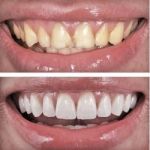Mouthwash Usage: How to Use Mouthwash for a Healthier Smile
- Introduction to Mouthwash
- Types of Mouthwash
- The Benefits of Using Mouthwash
- How to Properly Use Mouthwash
- Common Mistakes When Using Mouthwash
- Best Mouthwash Products to Try
Introduction to Mouthwash
Mouthwash is a liquid product designed to help clean the mouth, freshen breath, and reduce oral bacteria. It's commonly used in daily oral care routines to complement brushing and flossing. Mouthwash can reach areas that a toothbrush might miss, offering a deeper clean for your mouth. With so many varieties available on the market, it can be overwhelming to choose the best one for your needs. Understanding mouthwash usage, the benefits, and the right techniques can help you achieve optimal oral health.
Types of Mouthwash
Mouthwash comes in several types, each with its own benefits. The most common types are:
- Cosmetic Mouthwash: This type primarily freshens breath and leaves a pleasant taste in the mouth. It doesn’t fight bacteria but is great for a quick freshness boost.
- Therapeutic Mouthwash: These are designed to treat specific oral health issues, such as gum disease, cavities, and bad breath. They often contain fluoride or antiseptic agents to help reduce bacteria.
- Prescription Mouthwash: Available only through a dentist, these are stronger formulations for treating conditions like gum disease, infections, or severe dry mouth.
When choosing mouthwash, it’s essential to pick one that meets your specific needs. For example, if you are prone to cavities, a fluoride-based mouthwash might be most effective.
The Benefits of Using Mouthwash
Incorporating mouthwash into your daily oral hygiene routine can provide several key benefits:
- Prevention of Gum Disease: Therapeutic mouthwashes can reduce the growth of harmful bacteria that contribute to gum disease, helping to maintain healthy gums.
- Freshens Breath: Mouthwash is a quick and easy way to freshen your breath, especially after meals or before social events.
- Reduces Plaque: Some mouthwashes contain antibacterial agents that help reduce plaque buildup, which is essential for preventing cavities and gum disease.
- Fluoride Protection: Fluoride mouthwashes strengthen tooth enamel, helping to prevent tooth decay and cavities.
By addressing different aspects of oral health, mouthwash is a valuable addition to your overall dental care routine.
How to Properly Use Mouthwash
Using mouthwash correctly is crucial for getting the best results. Follow these steps for effective mouthwash usage:
- Choose the Right Mouthwash: Select the right type of mouthwash based on your needs, such as cosmetic, therapeutic, or fluoride-based.
- Measure the Right Amount: Most mouthwashes come with a cap that serves as a measuring cup. Pour the recommended amount, usually about 20 milliliters (or 4 teaspoons).
- Swish for 30 Seconds: Swish the mouthwash around your mouth for about 30 seconds, making sure it reaches all areas, including between your teeth and along the gumline.
- Spit, Don’t Rinse: After swishing, spit out the mouthwash. Avoid rinsing your mouth with water immediately afterward, as it can dilute the active ingredients.
Following these steps ensures the mouthwash works effectively to improve oral hygiene and freshen your breath.
Common Mistakes When Using Mouthwash
Many people make mistakes when using mouthwash, which can diminish its effectiveness. Here are some common errors to avoid:
- Using Too Much Mouthwash: Using more than the recommended amount doesn’t necessarily improve results and can cause irritation.
- Rinsing Immediately After Use: Rinsing with water or drinking right after using mouthwash can wash away the active ingredients.
- Using Mouthwash Too Often: While mouthwash is helpful, overusing it can cause irritation or disrupt the natural balance of bacteria in the mouth.
By avoiding these mistakes, you’ll ensure that your mouthwash is doing its job effectively.
Best Mouthwash Products to Try
If you're looking to incorporate mouthwash into your daily routine, here are some of the best products to consider:
- Listerine Total Care: A popular therapeutic mouthwash that fights plaque, prevents gum disease, and freshens breath with its strong antimicrobial formula.
- Corsodyl Mouthwash: A prescription-strength mouthwash for those dealing with gum disease, offering antibacterial protection and promoting gum health.
- ACT Restoring Mouthwash: A fluoride-based mouthwash that strengthens teeth and helps prevent cavities while freshening breath.
These products have been highly rated for their effectiveness in improving oral hygiene and maintaining a fresh, healthy smile.







 Jody B Vance, DDS, MS, PC4.0 (119 review)
Jody B Vance, DDS, MS, PC4.0 (119 review) Community Health Centers4.0 (206 review)
Community Health Centers4.0 (206 review) Dental Smiles of Joliet4.0 (268 review)
Dental Smiles of Joliet4.0 (268 review) Equitas Health Short North Medical Center3.0 (96 review)
Equitas Health Short North Medical Center3.0 (96 review) Riverside Tooth Co.5.0 (276 review)
Riverside Tooth Co.5.0 (276 review) Madison Dental Arts5.0 (19 review)
Madison Dental Arts5.0 (19 review) The Importance of Oral Health Education During Pregnancy for a Healthy Pregnancy
The Importance of Oral Health Education During Pregnancy for a Healthy Pregnancy Best Tips for Brushing Your Teeth Properly for Healthy Gums: Essential Techniques for Oral Health
Best Tips for Brushing Your Teeth Properly for Healthy Gums: Essential Techniques for Oral Health Why Skipping Dental Checkups Can Lead to Bigger Oral Health Problems
Why Skipping Dental Checkups Can Lead to Bigger Oral Health Problems Advantages of Porcelain Dental Restorations
Advantages of Porcelain Dental Restorations How Can Diabetes Cause Tooth and Gum Problems? Preventing and Managing Oral Health Issues
How Can Diabetes Cause Tooth and Gum Problems? Preventing and Managing Oral Health Issues Healthy Habits for Promoting Good Oral Health and Hygiene: Tips for a Healthy Smile
Healthy Habits for Promoting Good Oral Health and Hygiene: Tips for a Healthy Smile